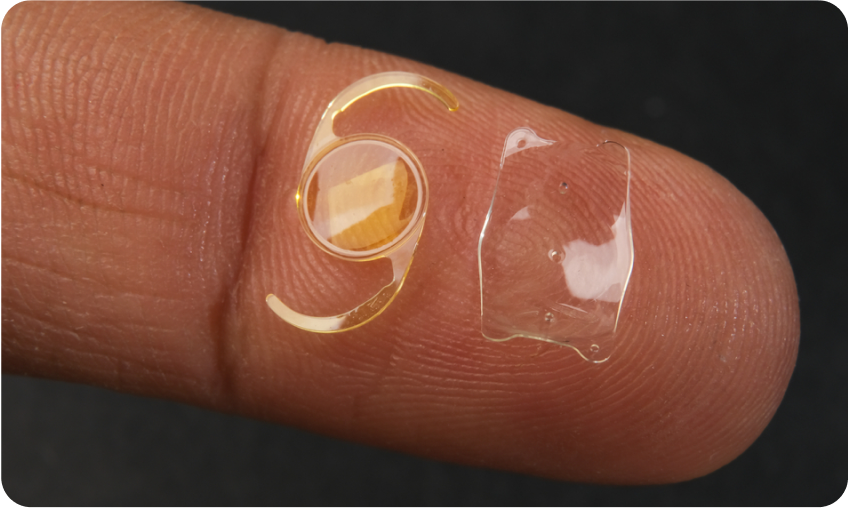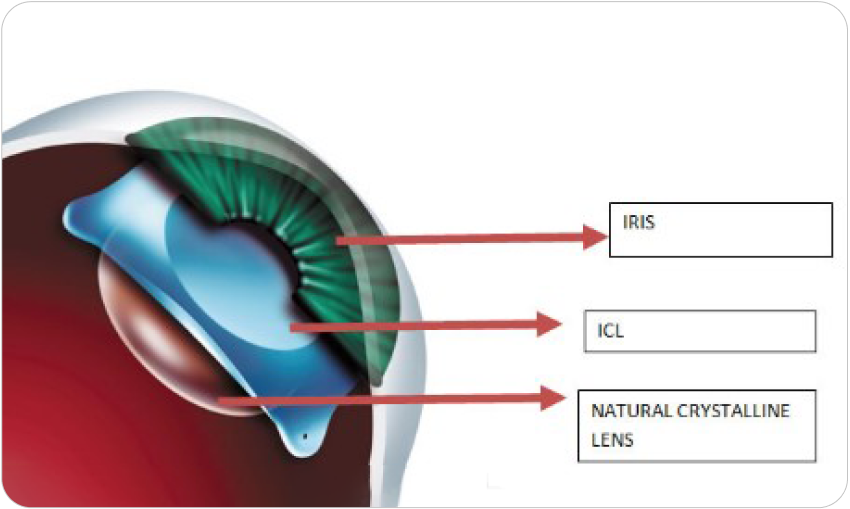

When most people think of refractive eye surgery, they immediately think of laser eye surgery.
Refractive laser eye surgery has revolutionised the way we can correct eyesight, however,
unfortunately, not everyone is a suitable candidate. Eligibility depends on factors like your eye
health, prescription and age. Fortunately for those seeking freedom from glasses or contact lenses,
but do not qualify for laser eye surgery, there are other surgical options available. These include
Refractive Lens Exchange (RLE) and Implantable Collamer Lenses (ICL). In this blog, we discuss the
differences between these two procedures.
Refractive lens exchange, also known as clear lens exchange or lens replacement surgery, involves removing the eye’s natural lens and replacing it with an artificial intraocular lens (IOL). The artificial intraocular lens is implanted at the time of the surgery, and its power is calculated specifically for your eye. The steps in the surgery are exactly the same as for cataract surgery, except in this case a clear lens is removed rather than a cataract (cloudy lens). The procedure is performed purely to provide reduced dependence on glasses or contact lenses

RLE is typically recommended for patients over the age of 45, who are starting to develop natural age-related lens changes such as presbyopia (difficulty focusing near and requiring reading glasses). At this age, there are fewer years of visual benefit from refractive surgery before the development of cataracts, which would therefore eventually require the removal of the natural lens during cataract surgery.
RLE provides a permanent vision correction solution for the majority of refractive errors, as the artificial lens (IOL) is designed to last a lifetime.
Implantable collamer lens surgery, also known as implantable contact lens surgery, involves the insertion of a specialised lens inside the eye without removing the natural lens. The lens is positioned between the iris and the natural lens.

By preserving the natural lens, patients retain the ability to change focus between near and far objects. Therefore ICLs are an excellent option for younger patients (<45), without any age-related lens change, looking to reduce or eliminate the need for glasses or contact lenses.
ICL surgery is a suitable option for patients with very high degrees of refractive error, that fall outside the range of available IOL power for RLE. The ICL is also removable, to allow for prescription changes or the development of other eye conditions in the future. Suitability for ICL depends on corneal health and adequate anterior chamber depth.
While laser eye surgery remains a popular choice for many seeking refractive eye surgery, it’s essential to remember that not everyone is a suitable candidate. RLE and ICL can be more expensive than laser eye surgery, however, they provide reliable and long-lasting vision correction. For many patients, RLE and ICL can result in better quality of vision because, unlike laser refractive surgery, there is no treatment to the cornea therefore reducing the risk of aberrations, light sensitivity and exacerbated dry eye discomfort.
You may be suitable for RLE or ICL, and both procedures have the potential to transform your life by reducing or eliminating your dependence on glasses or contact lenses. If you are considering refractive eye surgery, consultation with an experienced eye surgeon is crucial to gaining a full understanding of your options and making an informed treatment choice
Copyright © 2023 Nexus Eye Care | Trans4m Business Consulting – Website Design & SEO | Privacy Policy | ^